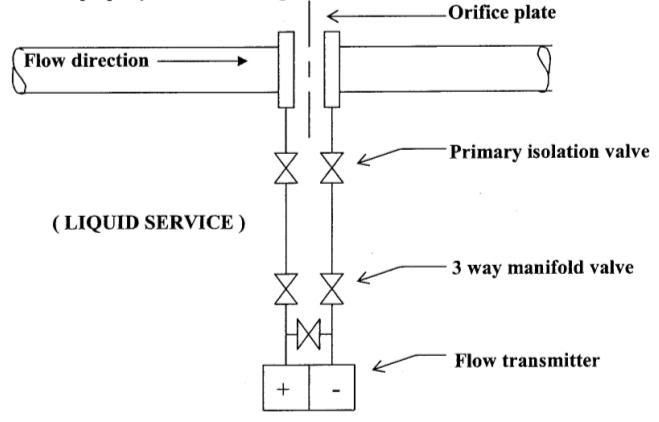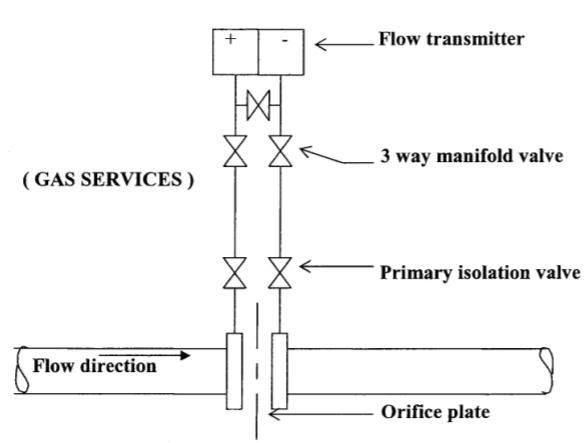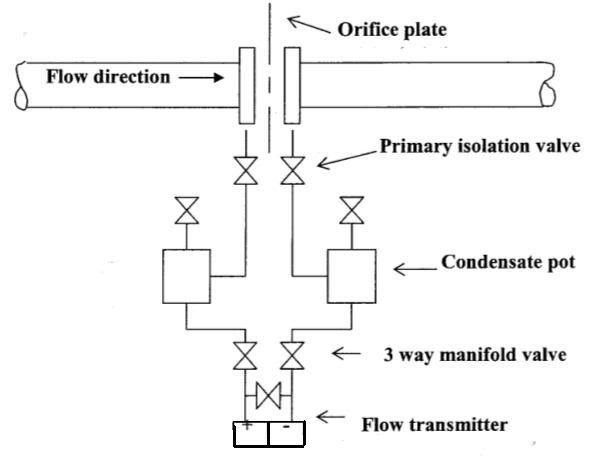How do you identify an orifice in the pipe line?
An orifice tab is welded on the orifice plate which extends outer of the line giving an indication of the orifice plate.
Why is the orifice tab provided?
The orifice tab is provided due to the following reasons.
• Indication of an orifice plate in a line.
• The orifice diameter is marked on it.
• The material of the orifice plate.
• The tag no. of the orifice plate.
• The mark the inlet of an orifice.
Advantages and Disadvantages of Orifice Plates
Advantages of orifice plates include:
• High differential pressure generated
• Exhaustive data available
• Low purchase price and installation cost
• Easy replacement
What is Bernoulli's theorem and where it is applicable?
Bernoulli's theorem states the "total energy of a liquid flowing from one point to another remains constant." It is applicable for non compressible liquids.
How do you identify the H. P. side or inlet of an orifice plate in line?
The marking is always done H. P. side of the orifice tab which gives an indication of the H. P. side.
How do you calibrate a D. P. transmitter?
The following steps are to be taken which calibrating:
- Adjust zero of the Tx'r.
- Static pressure test : Give equal pressure on both sides of the transmitter. Zero should not shift. If it is shifting carry out static alignment.
- Vacuum test: Apply equal vacuum to both the sides. The zero should not shift.
- Calibration Procedure: * Give 20 psi air or 24Vdc supply to the transmitter.
* Vent the L.P. side to atmosphere.
* Connect output of the Instrument to a standard test gauge or Multimeter and adjust zero. - Apply required pressure to high pressure side of the transmitter and adjust the span.
- Adjust zero again if necessary.
Glycol.
How do you carry out piping for a Different pressure flow transmitter on liquids, gas and steam services? Why ?
Liquid lines : On liquid lines the transmitter is mounted below the orifice plate because liquids have a property of self draining.

Gas Service : On gas service the transmitter is mounted above the orifice plate because Gases have a property of self venting and secondly condensate formation.

Steam Service : On steam service the transmitter is mounted below the orifice plate with condensate pots. The pots should be at the same level.
 Previous Lesson
Previous Lesson
Next Lesson
Liquid lines : On liquid lines the transmitter is mounted below the orifice plate because liquids have a property of self draining.

Gas Service : On gas service the transmitter is mounted above the orifice plate because Gases have a property of self venting and secondly condensate formation.

Steam Service : On steam service the transmitter is mounted below the orifice plate with condensate pots. The pots should be at the same level.
 Previous Lesson
Previous LessonNext Lesson


